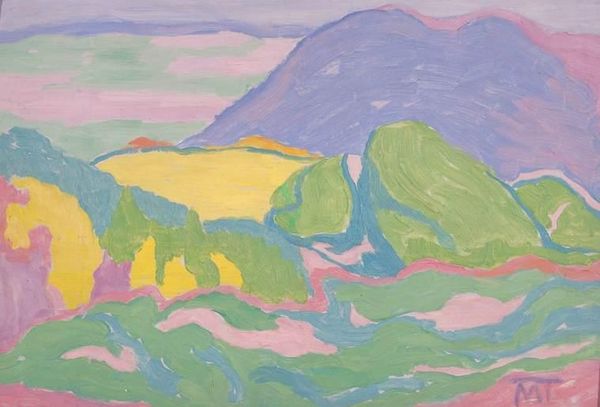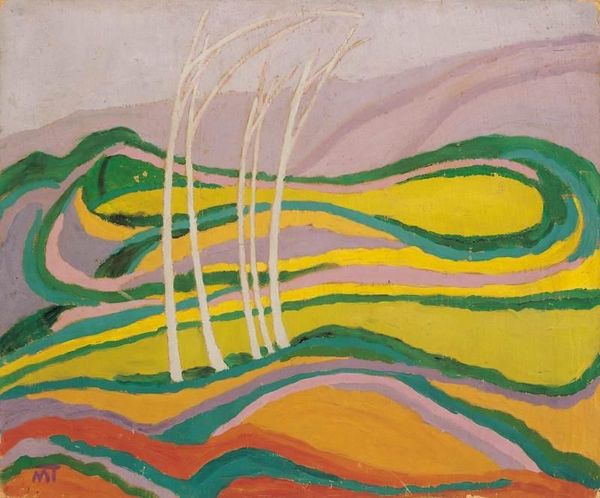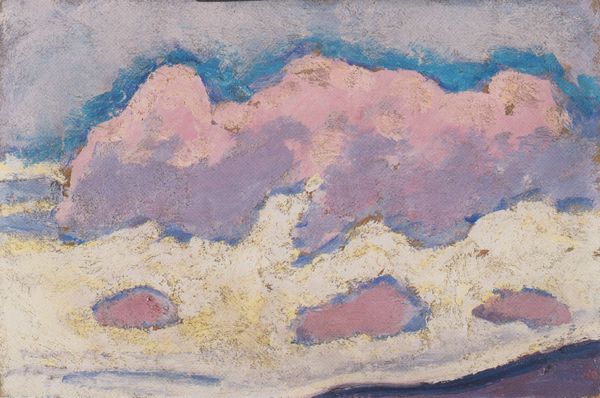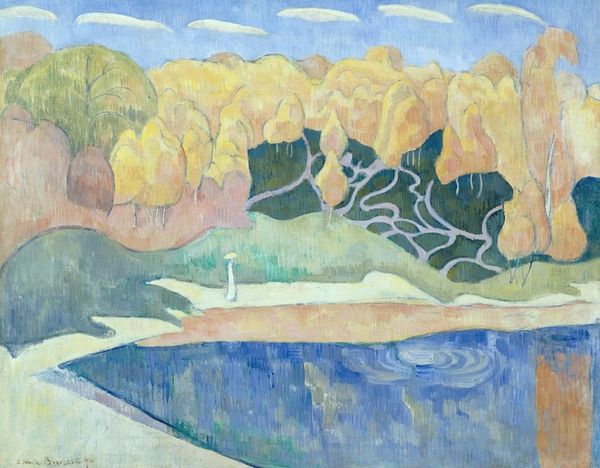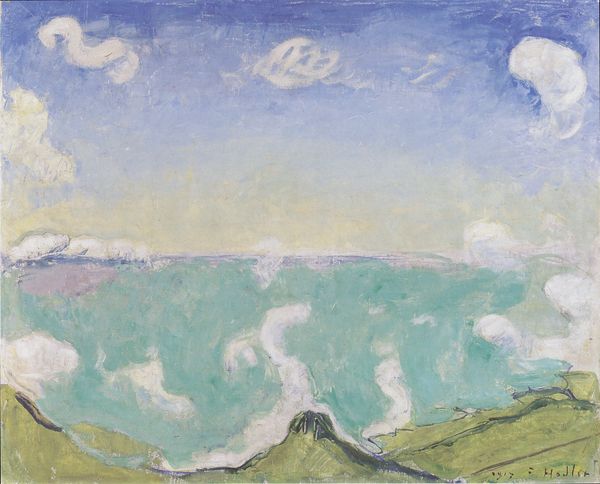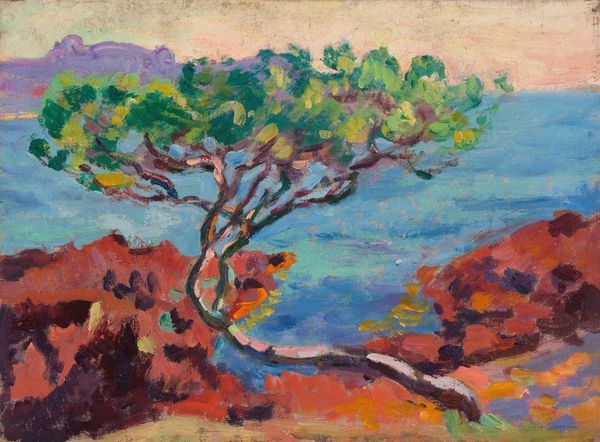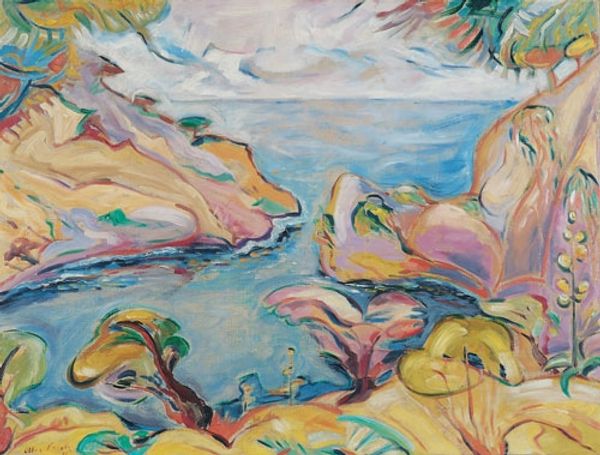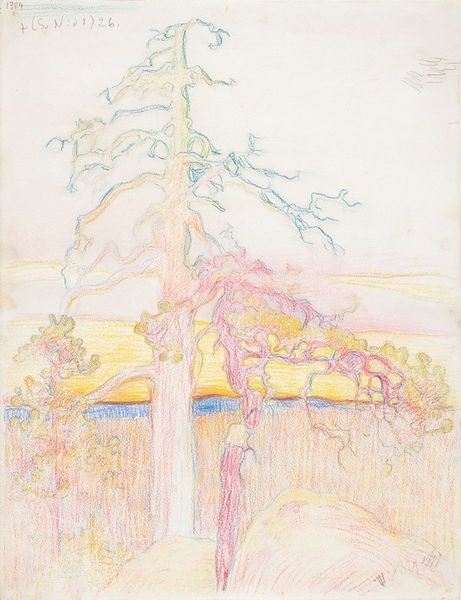
painting, oil-paint
#
organic
#
painting
#
oil-paint
#
landscape
#
figuration
#
expressionism
#
modernism
Copyright: Janos Mattis-Teutsch,Fair Use
Curator: Welcome. We’re standing before Janos Mattis-Teutsch’s "Blooming Cherry Tree," a striking oil painting, which offers us a glimpse into the artist’s unique modernist vision. Editor: My immediate impression is one of dreamy, almost childlike wonder. The colours are so soft, and the shapes are simplified, yet the tree has a peculiar grandeur, looming as a potent visual icon. Curator: Indeed. Mattis-Teutsch, an artist deeply involved with Expressionism, uses oil paint here in a way that emphasizes the physical application, creating texture and a sense of material presence. Look closely, you'll note his emphasis isn't on rendering perfect botanical accuracy. Editor: No, it's not about literal representation, is it? That palette of pastel pinks and greens evoke a sense of rebirth and the fleeting nature of spring. The stylized blooms feel symbolic, like emblems of renewal and the potential inherent in life, distilled in its pure, basic form. It almost reminds me of depictions of the tree of life. Curator: Absolutely. And consider the labour involved in preparing the materials: the grinding of pigments, the stretching of the canvas. The art lies not only in the final product, but also in that slow process, an almost meditative act of creation involving close contact with matter itself. Editor: Yes. In that regard, one notices that this image transcends the simple beauty of spring to symbolize broader ideas of human experience and how such ideas are visually processed and stored. Each of these strokes adds to our cultural memory. The blossom itself signifies a hopeful but also a passing beauty in human understanding of growth, death, and continuance. Curator: Precisely. The simplified forms draw the eye in and focus our attention not on the technical virtuosity, but on the pure expression of a feeling, perhaps even an ideal or sense of place. In an epoch when industry began its advance, here is an attempt to highlight a landscape's simple essence. Editor: An optimistic reminder. Having considered how cultural significance attaches to blooms like this, and observing how Mattis-Teutsch used its symbol, adds a fresh layer to understanding spring and nature. Curator: Agreed, that makes me reconsider our tendency to devalue that very labour in today's mechanized environment, almost blinding ourselves to how creation really unfolds.
Comments
No comments
Be the first to comment and join the conversation on the ultimate creative platform.
